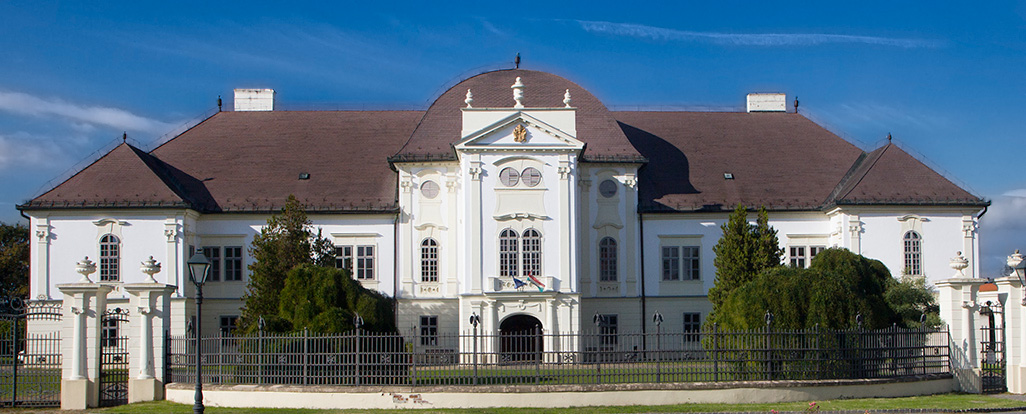A Short History of the Castle
Tamás Szécsényi or his sons of the Kacsics kin started the construction of the early fortified castle of Szécsény from the second third of the fourteenth century. It is a so-called municipal fortress — a citadel that develops as an integral part within the so-called market town. The first record of the fortress dated 1456 calls it castle, later it appears as castle or as fortified castle. According to the contemporary representations, by the seventeenth century it is a quadrangle building complex of great size with quadrangle and round bastions and a storied palace. The Luxembourgian king Sigismund probably visited palace, but János Hunyadi and his son, the later Hungarian king Matthias, were its guest for sure. The northwest projection of the castle of today — up to the first floor — is identical with the bastion seen on the representations.
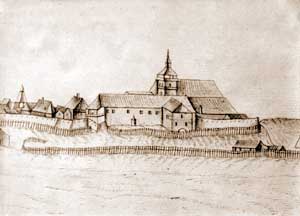
The Turkish wars caused great devastation in the castle. István Koháry had been continuously restoring the building since 1690; in 1717 three rooms and a “palace” (banqueting hall) were rebuilt in the west wing. From the year 1724 we have knowledge of eight smaller or larger rooms, two banqueting halls, a kitchen, a steward house, a servants' house and the still standing round bastion.
After having re-bought its estates from István Koháry, who had the pawn on the lands, the Forgách family started new constructions. It was Sigismund Forgách or his brother, János, who built the baroque castle still seen today around 1753-1763.
During the building of the H-formed castle of the so-called Grassalkovich type the constructor used — wherever he could — the still standing walls of the medieval castle. This is why the donjon is preserved in the northeast projection and many medieval building elements still slumber in the walls today.
In the middle of the building there is a baluster-decorated staircase from whence a row of communicating halls can be reached upstairs as well as downstairs. Along the south facade on both floors runs a corridor. The corridor upstairs must have been a loggia, which took its present shape only at the beginning of the nineteenth century. The once probably richly ornamented glazed stoves, which stood in the rooms, were heated through heating chambers from these corridors. The once probably open driveway got a superstructure when the loggia was rebuilt into a corridor. Until the great renovation, the windows were shuttered and the roof was covered with wooden shingle.
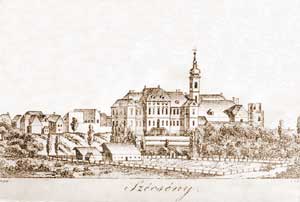
On the northern side once an English style park of several acres belonged to the castle, laid out by József Forgách in the beginning of the nineteenth century. It consisted of thousands of plants, a pheasantry, goldfish ponds, avenues, artificial caves and ruins, waterfall and an outlook tower — all connected through evocative promenades and paths. At this time the bulwark of the medieval town, and the castle as well, was transformed into a small picturesque pavilion. The domed hall downstairs decorated by Doric columns and segmented arched niches is a Classicist central space with a fascinating atmosphere.
Ferenc Pulszky bought the gradually shrinking estate and the castle in 1846. The imperial treasury confiscated this possession of Pulszky's as well after he had been condemned to death because of his public role in the revolution of 1848. He could regain his property only after a long period — and by that time in quite a devastated state. The Pulszky family sold the castle at the turn of the century to the Budapest lawyer Jenö Gross who however spent most of his time in the capital. The Forgách castle became Baron Béla Liptay's property in 1946.
The renowned and acknowledged scholar and his family managed to escape deportation and harsher atrocities in the fifties, nevertheless the local council settled other citizens in their castle and a cheese factory was established in the cellar. The building, already in need of renovation before the Second World War, fell into decay as a result of the lack of financial means. In 1955 the roofing was renewed, the building received a simple slate roof. In the end, Béla Liptay sold the castle to the Hungarian state for a symbolic price. The historic monument was restored between 1969 and 1973.
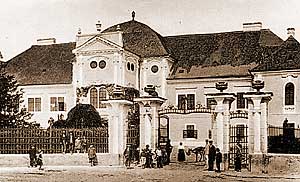 During this last renovation no investigation of the monument was undertaken, although the portal and the southern wall of the former castle came to light in the garden. Because of the continuous change of owners, successive reconstructions and the decay after the war very little remains from the indoor structural details of the original Baroque castle. We know close to nothing about the original wall paintings, or about frescos, stoves and stuccos connected to the Forgách family. Two of the stoves preserved in their original place were made in a Vienna workshop on the eve of the nineteenth century.
During this last renovation no investigation of the monument was undertaken, although the portal and the southern wall of the former castle came to light in the garden. Because of the continuous change of owners, successive reconstructions and the decay after the war very little remains from the indoor structural details of the original Baroque castle. We know close to nothing about the original wall paintings, or about frescos, stoves and stuccos connected to the Forgách family. Two of the stoves preserved in their original place were made in a Vienna workshop on the eve of the nineteenth century.
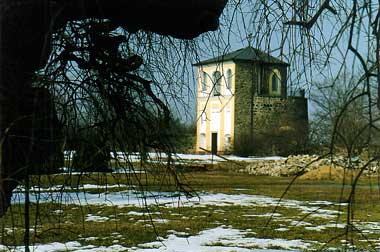 Since 1973, the historical monument — except for the cellar — has had the function of a public museum bearing the name of Ferenc Kubinyi, the well-known nineteenth century politician, archaeologist and natural scientist, and gives place for the historical and archaeological artifacts from the county of Nógrád.
Since 1973, the historical monument — except for the cellar — has had the function of a public museum bearing the name of Ferenc Kubinyi, the well-known nineteenth century politician, archaeologist and natural scientist, and gives place for the historical and archaeological artifacts from the county of Nógrád.
The Forgách Castle is an outstanding historical monument; its subsoil and surroundings are under archaeological protection. The former English park is a nature reserve.

The board of the national treasury asserts the proprietary rights in the name of the Hungarian state.
